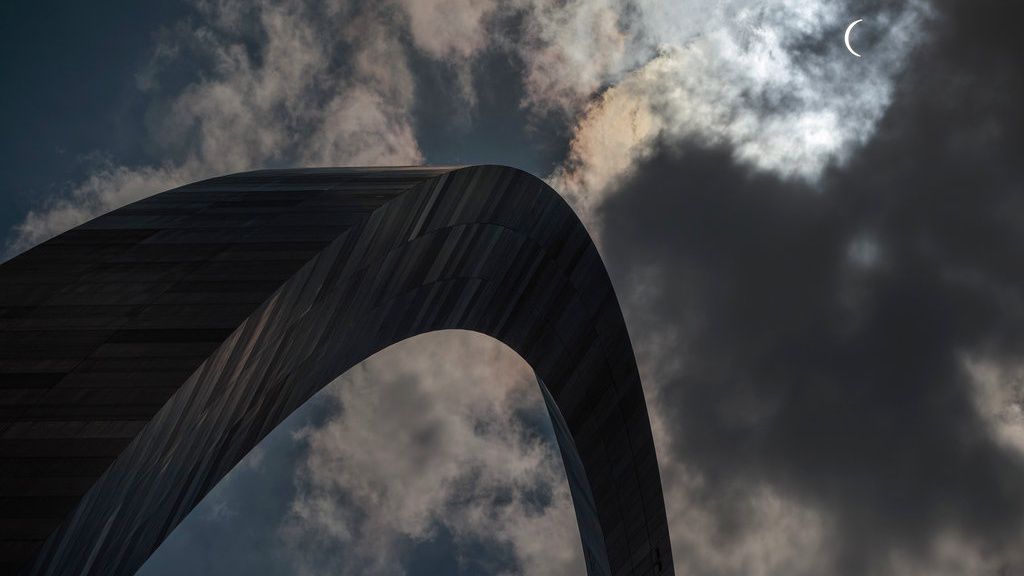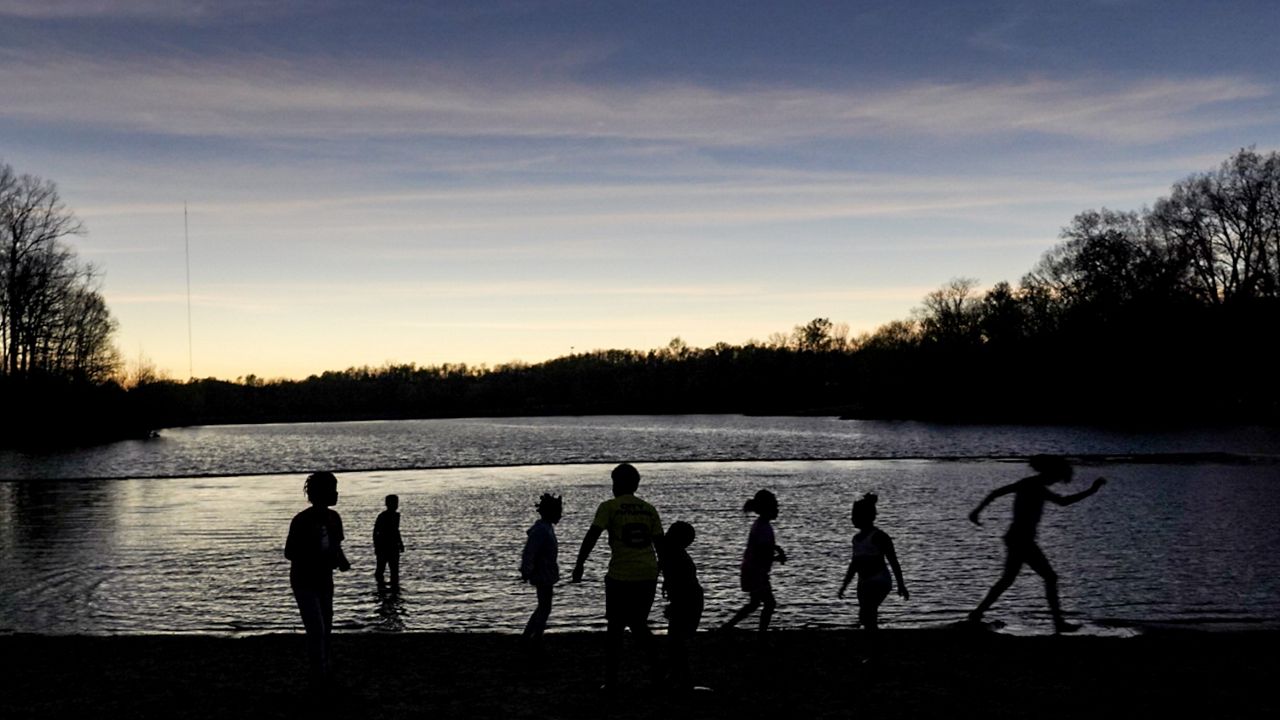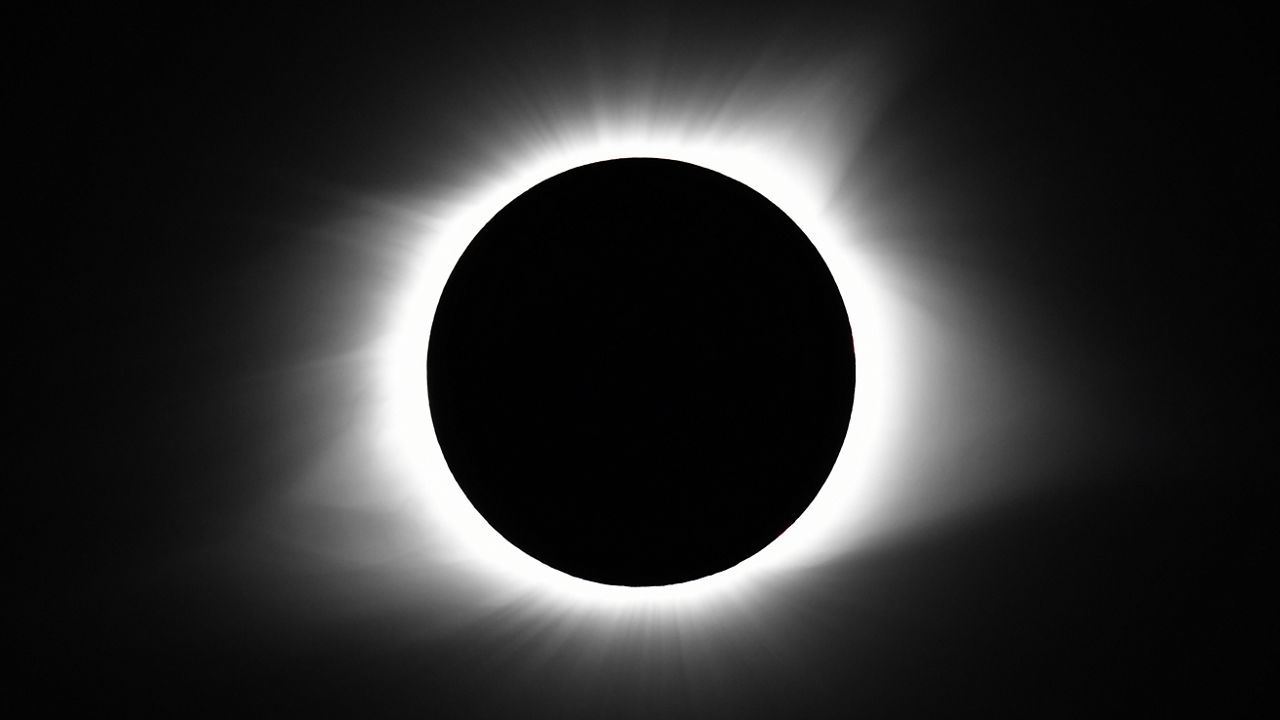ST. LOUIS— The next total solar eclipse is a month away, and the excitement is growing as parts of Missouri and Illinois will be prime viewing for the spectacle.
The St. Louis area will experience a partial solar eclipse with approximately 99% of the sun being blocked by the moon. Spots about an hour to two hours south of St. Louis will see 100%of the sun blocked by the moon.
Here is some information to help you prepare to view the sight.
Eclipse start: 12:42 p.m.
Maximum eclipse: 2:00 p.m.
Eclipse ends: 3:17 p.m.
Duration: 2 hours, 34 minutes
)
Areas in southeastern Missouri and southern Illinois will be in the path of totality. Carbondale is the largest city in Illinois in totality and there are many other towns across the area planning big events. State parks are also getting in on the excitement and promoting campsites for visitors.
Full solar eclipses occur every year or two or three, often in the middle of nowhere like the South Pacific or Antarctic. The next total solar eclipse, in 2026, will grace the northern fringes of Greenland, Iceland and Spain.
Aside from Carbondale, Illinois, in the crosshairs of both the 2017 and 2024 eclipses, it usually takes 400 to 1,000 years before totality returns to the same spot, according to NASA.
North America won’t experience totality again until 2033, with Alaska getting sole dibs. Then that’s it until 2044, when totality will be confined to Western Canada, Montana and North Dakota.
There won’t be another U.S. eclipse, spanning coast to coast, until 2045. That one will stretch from Northern California all the way to Cape Canaveral, Florida.
Except during the brief total phase of the total solar eclipse, the St. Louis Science Center says it is not safe to look directly at the sun without special glasses.
Cameras, binoculars and telescopes must be outfitted with special solar filters for safe viewing. Bottom line: Never look at an exposed sun without proper protection any day of the year.
Here is one place you can get eclipse glasses.
The Illinois Department of Transportation (IDOT) is warning spectators to expect congestion if heading to some of the prime viewing spots.
Crowds of up to 200,000 people are expected in southern Illinois.
I-57 is the direct interstate access to the path of totality. IDOT says there can also be congestion along U.S. 45, Illinois 1 and I-64 and I-70 which provide access to the area.
IDOT says it will lift any lane closures during that time and is coordinating with other agencies to ensure things run smoothly and will be ready to assist with traffic detours and communicate travel information.
They also advise that if you are driving during the eclipse, turn your headlights on. They also advise not to park along the shoulder of the highway or interstates.








